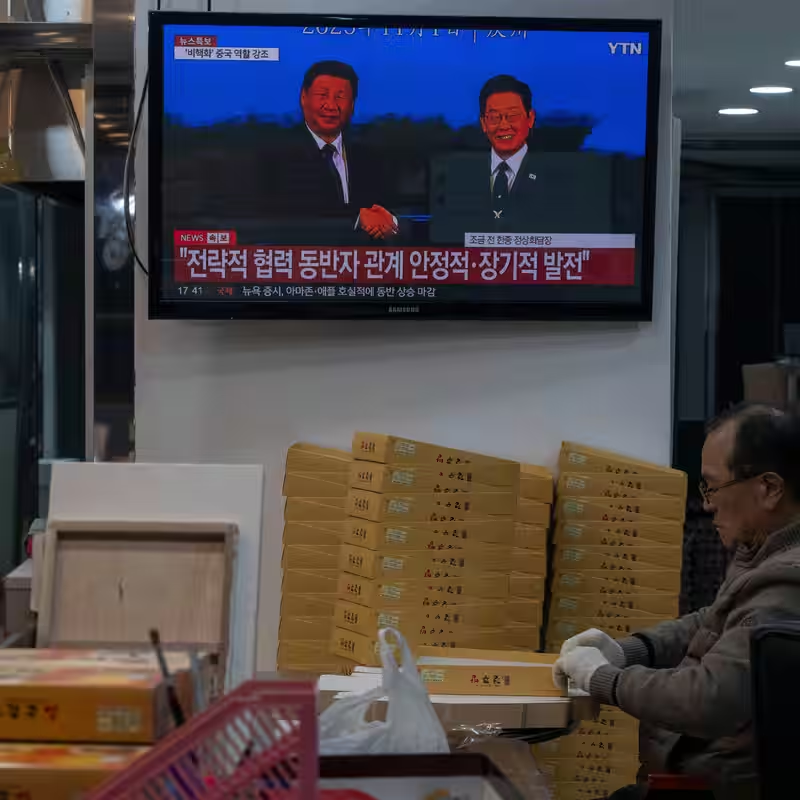Table of Contents
- A Delicate Balancing Act
- Xi’s Historic Visit to Seoul
- Trump’s Nuclear Submarine Surprise
- The Economic Tightrope
- What’s at Stake for Asia?
- Sources
South Korea Walks Tightrope Between U.S. and China
In a high-stakes diplomatic dance, South Korea’s new president, Lee Jae Myung, is navigating one of the most complex foreign policy challenges of the decade: maintaining strong ties with both the United States and China amid their escalating rivalry.
With Chinese President Xi Jinping and former U.S. President Donald Trump both visiting South Korea this week for the Asia-Pacific Economic Cooperation (APEC) summit in Gyeongju, President Lee rolled out the red carpet for both leaders—but the optics mask a deeper strategic tension.
Xi’s Historic Visit to Seoul
President Xi’s trip marks his first official visit to South Korea in 11 years—a clear signal that Beijing is eager to rekindle economic and political ties with Seoul. During their meeting on Saturday, Xi called South Korea an “inseparable partner” and urged Seoul to resist U.S.-led efforts to restrict trade with China.
“We must uphold the multilateral trading system and reject unilateral suppression,” Xi told President Lee, according to South Korean officials.
For his part, Lee, who took office in June 2025, has consistently emphasized improving relations with China as a cornerstone of his foreign policy. The APEC summit was originally seen as a golden opportunity to deepen bilateral economic cooperation, especially in green tech and semiconductor supply chains.
Trump’s Nuclear Submarine Surprise
But just days before Xi’s arrival, President Trump threw a geopolitical curveball. During his Wednesday meeting with Lee, Trump announced that the U.S. would allow South Korea to develop nuclear-powered submarines—a move that significantly deepens Seoul’s integration into Washington’s Indo-Pacific security architecture.
While South Korea had quietly lobbied for this capability to patrol waters near North Korea and China more effectively, Trump’s public announcement caught even Seoul’s defense ministry off guard.
The decision signals a major shift in U.S. nonproliferation policy and could strain Seoul’s efforts to appear neutral in the U.S.-China rivalry. Analysts warn that Beijing may view the submarine program as a direct threat, especially given its proximity to Chinese naval routes.
The Economic Tightrope
South Korea’s dilemma is both strategic and economic. China remains its largest trading partner, accounting for nearly 25% of its exports—particularly in semiconductors, batteries, and displays. Meanwhile, the U.S. is a critical security ally and a growing market for Korean EVs and tech.
| Trade Partner | Share of Korean Exports (2024) | Key Sectors |
|---|---|---|
| China | 24.7% | Semiconductors, Batteries, Petrochemicals |
| United States | 15.3% | Automobiles, Electronics, Machinery |
Any move perceived as aligning too closely with Washington—such as joining U.S.-led tech restrictions on China—could trigger retaliatory trade measures from Beijing. Yet distancing from the U.S. alliance risks undermining South Korea’s national security, especially with North Korea’s missile tests continuing unabated.
What’s at Stake for Asia?
South Korea isn’t alone. Nations like Japan, Vietnam, and Indonesia face similar pressures. But Seoul’s position is uniquely precarious: it shares a maritime border with China, hosts 28,500 U.S. troops, and relies on both powers for economic survival.
Experts say Lee’s strategy—engaging both superpowers while avoiding overt alignment—may buy time, but the window is closing. “The era of strategic ambiguity is ending,” said Dr. Min-jung Kim, a foreign policy fellow at the Asan Institute. “Soon, Seoul will have to make harder choices.”
Sources
The New York Times: Can South Korea Manage the Competing Needs of the U.S. and China?




